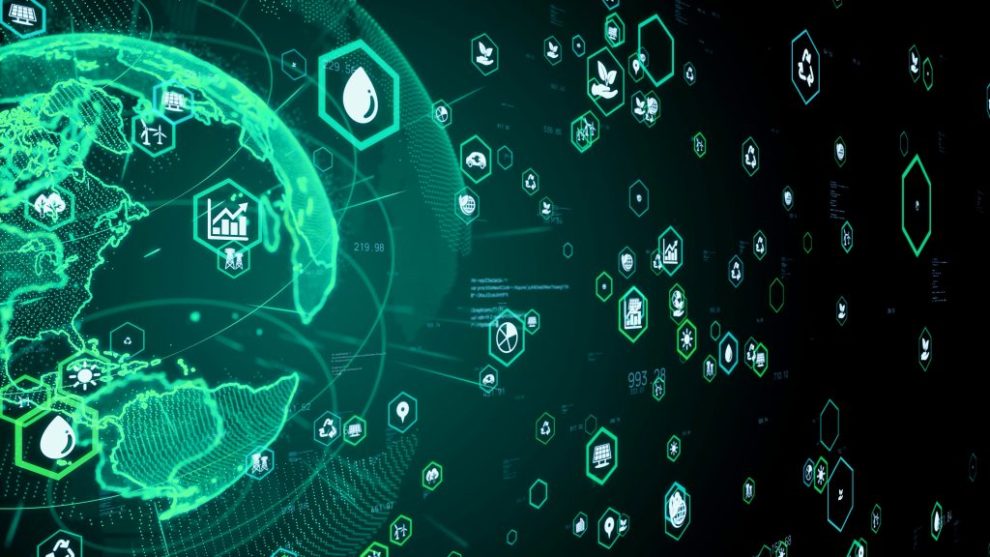Climate change is the defining challenge of our time, threatening our planet and way of life. While the gravity of the situation is undeniable, there’s a growing arsenal of tools at our disposal, one of the most powerful being artificial intelligence (AI).
AI presents a unique opportunity to tackle climate change by:
- Boosting our understanding of the complex systems driving climate change.
- Developing and optimizing solutions across various sectors.
- Empowering us to make informed decisions and adapt to a changing climate.
Let’s delve into some of the innovative ways AI is being used to combat climate change:
1. Predicting and Preventing Climate Disasters:
AI algorithms can analyze vast amounts of data to predict extreme weather events with greater accuracy, enabling proactive disaster preparedness and risk mitigation.
Extreme Weather Forecasting
AI-powered weather forecasting systems can predict extreme events like heatwaves, floods, and storms with unprecedented precision across both space and time. This allows for better preparedness through early warning systems, infrastructure protection, and evacuation planning.
Flood Risk Assessment
By analyzing topographical data, rainfall patterns, and flood models, AI can identify areas most vulnerable to flooding. This allows urban planners and disaster response teams to develop preventative measures like improved drainage and flood barriers.
Wildfire Prevention
AI analyzes satellite imagery to detect hotspots and uses weather data to model fire spread. This facilitates resource allocation to high risk areas and aids in early wildfire detection, allowing for quicker response and potentially saving lives and property.
2. Optimizing Energy Production and Consumption:
AI can help optimize renewable energy integration, develop efficient smart grids, and promote sustainability in buildings.
Renewable Energy Integration
AI algorithms integrate wind, solar and other renewable sources into the energy grid by forecasting supply and demand. This balances the grid by routing power most efficiently.
Smart Grids
AI manages interconnected grids via sensors and software to dynamically optimize energy distribution. This reduces costs and emissions by smoothing out supply and demand imbalances in real-time.
Energy Efficient Buildings
In offices and homes, building automation systems use AI to control lighting, heating, cooling and other energy intensive systems. By optimizing these systems based on occupancy, usage patterns and weather, AI can cut energy bills by up to 40%.
3. Sustainable Transportation and Agriculture
AI is helping usher in sustainable systems for transportation and food production.
Electric Vehicle Charging Optimization
AI charging platforms distribute charging loads intelligently across networks while predicting driver behaviors. This expands EV adoption by routing drivers to stations and scheduling vehicle charging for maximal grid efficiency.
Precision Agriculture
AI and robotics allow ultra-precise spraying of water, fertilizers and pesticides tailored to each plant. This increases yields while minimizing chemical usage, soil damage and water wastage.
Sustainable Logistics
AI optimizes fleet routing and transport loading to reduce mileage. Combined with autonomous trucks, this substantially lowers costs and emissions associated with moving food, goods and materials.
4. Carbon Capture and Storage
AI can identify optimal sites for carbon capture facilities and improve the efficiency of carbon sequestration technology.
Carbon Capture Facility Siting
By assessing geological formations and subsurface infrastructure, AI models pinpoint suitable locations to store captured CO2 underground, cost-effectively and safely.
Optimizing Carbon Capture Systems
AI analyzes chemical and mechanical sensor data to tune and enhance carbon capture systems. This increases operational efficiency and scalability while driving down sequestration costs.
The Road Ahead
While AI holds immense potential in combating climate change, it’s crucial to remember it’s just one tool in a broader toolbox. Ethical considerations, responsible development, and collaboration between scientists, policymakers, and communities are key to harnessing AI’s power for a sustainable future.
By embracing AI innovations and working together, we can build a future where technology is not just a contributor to climate change, but a powerful force for good in protecting our planet for generations to come.
Remember, AI is not a silver bullet, but a powerful tool in our fight against climate change. Let’s use it wisely and work together for a sustainable future!
















Add Comment